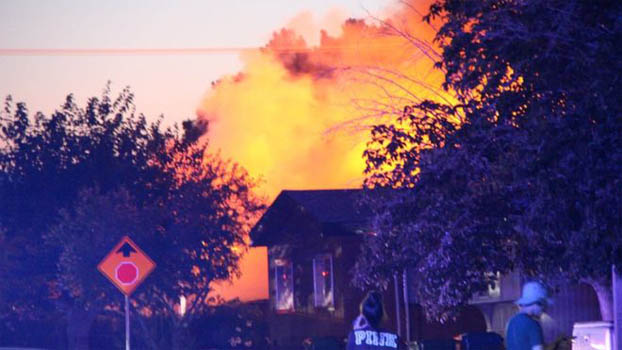Second, stronger quake shakes California, causing more damage

A magnitude 7.1 earthquake struck Southern California on Friday night, the second major temblor in less than two days and one that rocked buildings across Southern California, adding more jitters to an already nervous region, reports the Los Angels Times..
The quake was centered near Ridgecrest, the location of the July Fourth 6.4 magnitude temblor that was the largest in nearly 20 years. It was followed by a aftershock first reported as 5.5 in magnitude. Scientists said it the fault causing the quakes appears to be growing.
There were reports of Friday night’s quake causing some fires and other damage in Ridgecrest. On Twitter, people reported the shaking was felt in Bakersfield and as far away as Las Vegas, Merced and San Jose.
About 3,000 residents in Ridgecrest and the surrounding areas are without power following the earthquake, according to Southern California Edison. In Los Angeles, there were no immediate reports of major damage to buildings and infrastructure, according to the Los Angeles Fire Department.
In Trona and Ridgecrest, two Mojave towns shaken by both quakes, residents answered their phones frantically and in fear.
“They’re saying the ground split,” said Winter Wilson, who was driving home to Trona from Bakersfield, her voice shaking. “They made me promise not to come.”
Trona resident Ivan Amerson said he had heard reports from neighbors there was “significant damage” to the town, with houses knocked off their foundations. Amerson evacuated with his family after the first quake and was unsure he could get back, given reports that roads to the town were impassable Friday evening because of rockslides.
The shaking was less intense in the Los Angeles metro area, and there were no immediate reports of major damage or injuries.
The 7.1 quake that struck at about 8:20 p.m. Friday night was about 10 times larger than the on Thursday morning, Caltech seismologist Lucy Jones said.
The Friday quake occurred on the same fault system as the 6.4 temblor. It was farther away from Los Angeles, though still in the Owens Valley.
“This happened at the end of the zone that moved previously,” Jones said, adding that the fault is now likely to be 25 to 30 miles long.
“The fault is growing,” she said.
“There’s a 5% chance that this could be followed by an even larger quake,” said USGS seismologist Robert Graves, also speaking at a news conference Friday.
Kern County Fire Chief David Witt said his department has responded to multiple structural fires, but there have been no reported fatalities. He said there have been a lot of ambulance calls. An evaluation of Isabella Lake Dam shows that it is OK, Witt said, but they will continue to investigate tomorrow. His department has requested assistance from L.A. city and county fire departments and the Orange County Fire Department.
The plan now is to do a systematic search in the Ridgecrest area. Helicopters are also assisting.
Friday’s quake was larger in magnitude than the destructive 1994 Northridge quake, which measured 6.7 magnitude. But that temblor occurred in an urban area, while this week’s huge quakes occurred 100 miles from L.A.
A 7.1 quake in 1999 hit the Hector Mines area of the Mojave Desert. Because of its distance from Los Angeles, it did not cause major damage or injuries.
The July Fourth earthquake had ruptured along a length of fault 10 miles long, from a remote point northeast of Ridgecrest, Calif., a city of 29,000 people, and continued southwest almost all the way to the city limits, scientists said.
The aftershocks will probably “go on for months, if not years,” Caltech seismologist Egill Hauksson said earlier Friday.
The odds, he told The Times, were decent that there could be another aftershock of magnitude 5 or greater at some point.




